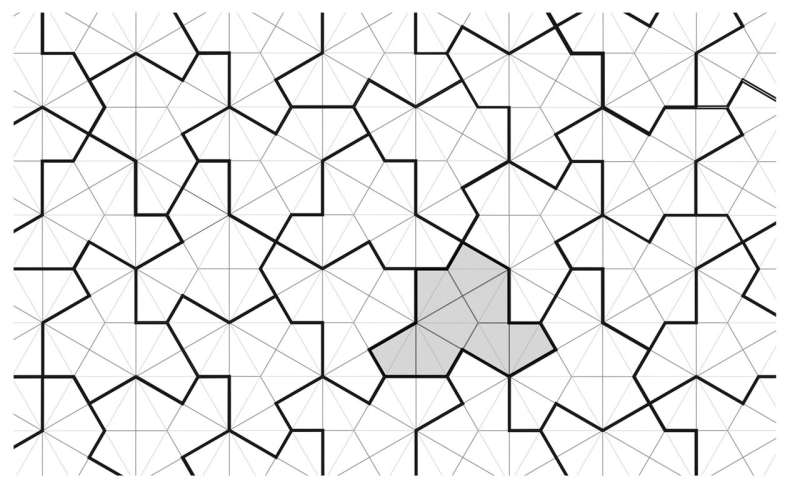March 23, 2023 report
This article has been reviewed according to Science X's editorial process and policies. Editors have highlighted the following attributes while ensuring the content's credibility:
fact-checked
preprint
trusted source
proofread
A geometric shape that does not repeat itself when tiled

A quartet of mathematicians from Yorkshire University, the University of Cambridge, the University of Waterloo and the University of Arkansas has discovered a 2D geometric shape that does not repeat itself when tiled. David Smith, Joseph Samuel Myers, Craig Kaplan and Chaim Goodman-Strauss have written a paper describing how they discovered the unique shape and possible uses for it. Their full paper is available on the arXiv preprint server.
When people tile their floors, they tend to use simple geometric shapes that lend themselves to repeating patterns, such as squares or triangles. Sometimes though, people want patterns that do not repeat but that represents a challenge if the same types of shape are used. In this new effort, the research team has discovered a single geometric shape that if used for tiling, will not produce repeating patterns.
Under their scenario, the researchers noted that tiling refers to fitting shapes together such that there are no overlaps or gaps. Tiling that does not have repeating patterns is known as aperiodic tiling and is generally achieved by using multiple tile shapes. For many years, mathematicians have been studying the idea of creating shapes that could be used to create an infinite variety of patterns when tiled.
One of the first attempts resulted in a set of 20,426 tiles. That was followed by the development of Penrose tiles, back in 1974, which come in sets of two differently shaped rhombuses. Since that time, mathematicians have continued to search for what has come to be known as the "einstein" shape—a single shape that could be used for aperiodic tiling all by itself.
Notably, the name comes from the phrase "one stone" in German, not from the famous physicist. In this new effort, the research group claims to have found the elusive einstein shape, and have proved it mathematically.
The shape has 13 sides and the team refers to it simply as "the hat." They found it by first paring down possibilities using a computer and then by studying the resulting smaller sets by hand. Once they had what they believed was a good possibility, they tested it using a combinatorial software program—and followed that up by proving the shape was aperiodic using a geometric incommensurability argument. The researchers close by suggesting that the most likely application of the hat is in the arts.
More information: David Smith et al, An aperiodic monotile, arXiv (2023). DOI: 10.48550/arxiv.2303.10798
Journal information: arXiv
© 2023 Science X Network




















